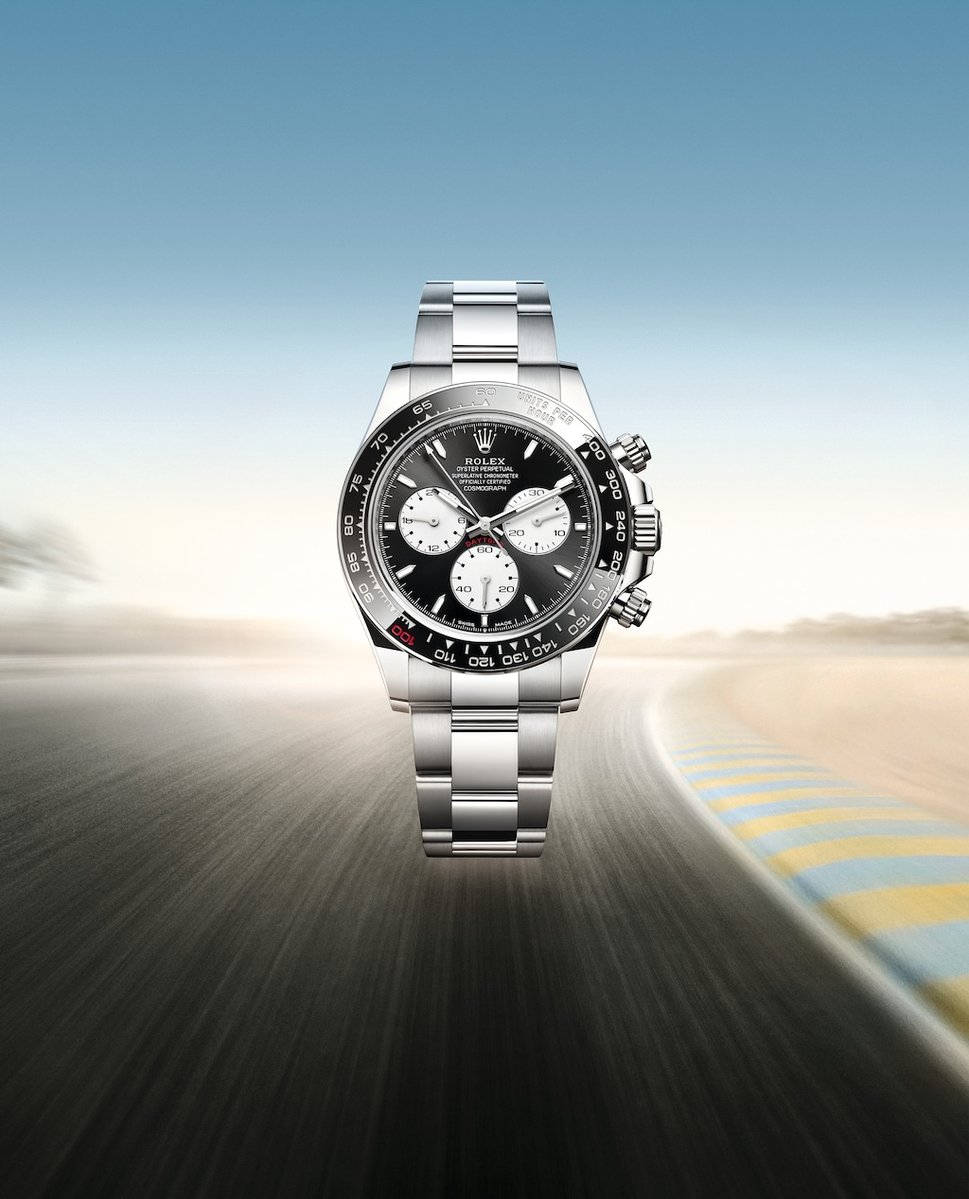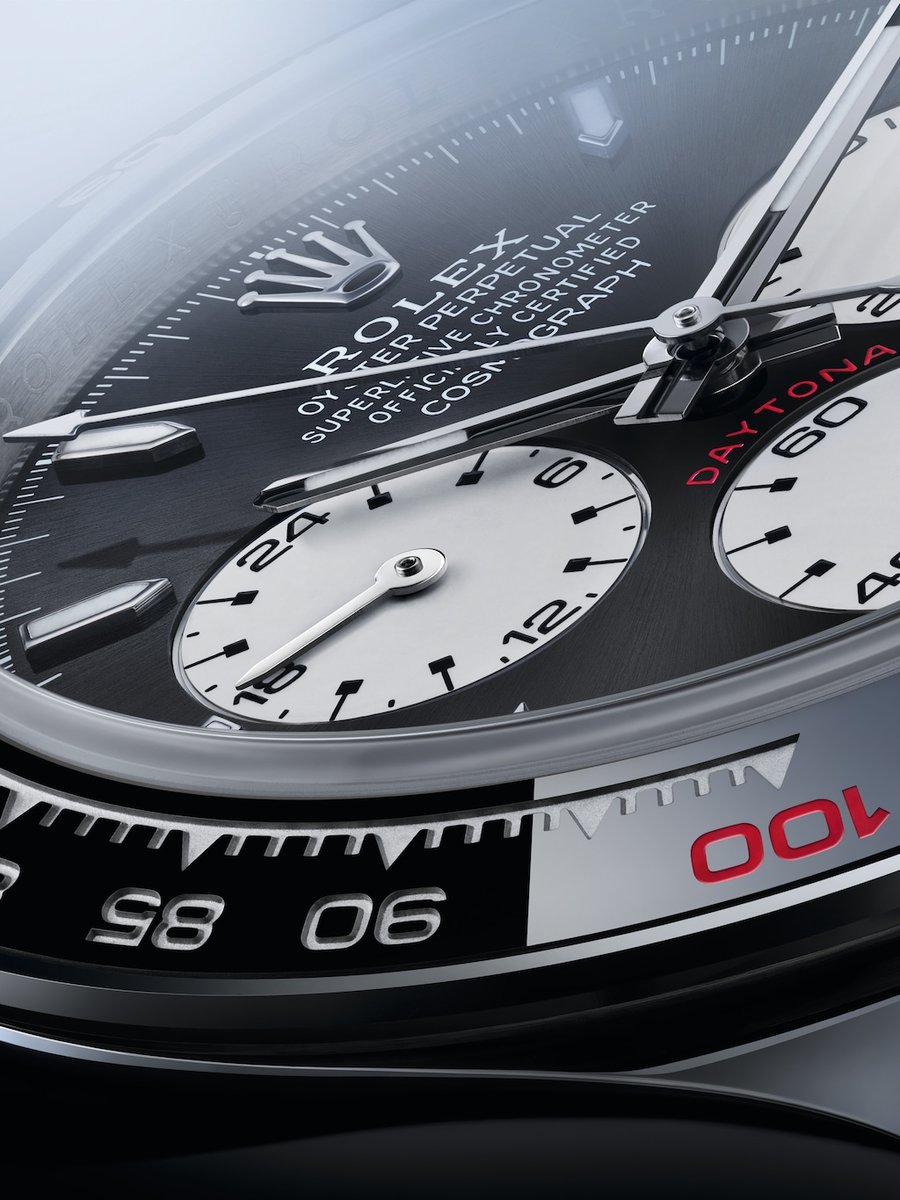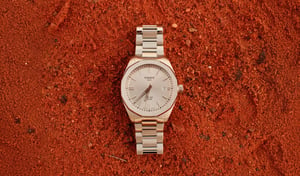This past weekend, the 24 Hours of Le Mans celebrated an entire century of endurance races, which Ferrari managed to win after a fifty-year absence. Like some sort of motorsports fairytale Rolex also decided to mark the anniversary – and its historic association with the world’s most famous motorsport event – by unveiling a special edition Le Mans Daytona, which is an exciting watch on its own merits, but also an exciting peek into the prominent watchmaker’s potential future.
While Charles Leclerc was investigating how he could swap his SF-23 F1 for the #51 Ferrari 499P hypercar just to enjoy a taste of success with the Prancing Horse, all eyes were firmly set on the new Rolex release. It’s a great-looking watch from pretty much every angle, featuring the updated Daytona design that made its debut at Watches & Wonders 2023, along with a couple of hidden easter eggs… and a rather interesting rollout strategy.
For context, this is the second time in recent memory – after the Sea-Dweller Deepsea Challenge from last November – that Rolex has launched a timepiece outside of a major watch show. As any good statistician will tell you: “Once is a data point, two is a trend.”

RELATED: How To Spot A Fake Rolex – A Comprehensive Guide On Sidestepping The Fugazis
And while this specific Daytona was clearly tied to the 100th running of Le Mans, it’s fair to assume we can expect more Rolex releases to be unveiled in a similar fashion; a method which they’ve actually been trialling with Rolex’s younger sibling Tudor over the last few years.
The second interesting detail to note about this Daytona Le Mans is its clear heritage inspiration. As far as I can remember, Rolex’s modus operandi has been focused on gradual, iterative change to its collections which – despite being slow in progress – have always been relentlessly forward-focused.
Considering how many great watches they have in the archives, Rolex could have easily cashed in on the explosion of enthusiasm for vintage-inspired watches over the last decade. But it didn’t. This a clear reminder to the watch community that the Big Crown isn’t interested in trends. It plans in decades, not quarters.

With the launch of this Rolex Daytona Le Mans edition, we’ve received a Paul Newman-esque reverse-panda dial that’s almost a direct nod to the hugely popular vintage Daytona ref. 6263s. The two biggest hallmarks can be found in the chronograph subdials, which are solid white rather than the thick contrasting ring we normally find, and the distinctive square markers.
While Rolex is celebrating the historical moment of the 24 Hours of Le Mans’ 100th year, a tribute to the race could have easily been made by including the contrasting red of the “100” marker on the bezel (which Rolex did anyway).
As a rule, Rolex almost never changes the design of a watch beyond a different dial colour or bracelet style, so this Rolex Daytona Le Mans edition could signal a new era for the brand, where it takes the future-focused-blinkers off and delivers a little more historical awareness plus design variety to collectors.
Sure, it’s not the most creative watch design I’ve ever seen, but remember: we’re talking about Rolex. Progress is progress.

Getting into the hefty white gold watch itself, this fresh Daytona features the same 40mm case we saw earlier this year in the other “latest generation” references and most of the other design details too (subdials and bezel obviously aside).
For those paying attention, you’ll notice the nine o’clock subdial is slightly different to the aforementioned predecessors with a 24-hour elapsed time measure in place of a 12-hour tracker. An obvious reference to the 24 Hours of Le Mans race.
The detail may be small in visual impact, but it’s large in watchmaking. To achieve this, Rolex had to redesign the movement and as a result, this Daytona is the first to be powered by the calibre 4132 as opposed to the calibre 4131 introduced a few months prior.
While not a first for the modern Daytona, this reference is also just the second Rolex Chronograph to feature an exhibition caseback that flaunts the movement within; the first was the extremely attractive reference in platinum.
All things considered, it’s a great addition to the Daytona catalogue and one that fans of the brand already love. Sure, there will invariably be some out there who complain it’s white gold and not steel, but let’s be honest – if the price difference between the two is what’s worrying you, you’ll probably still be on the waiting list if they eventually release a steel version.
















